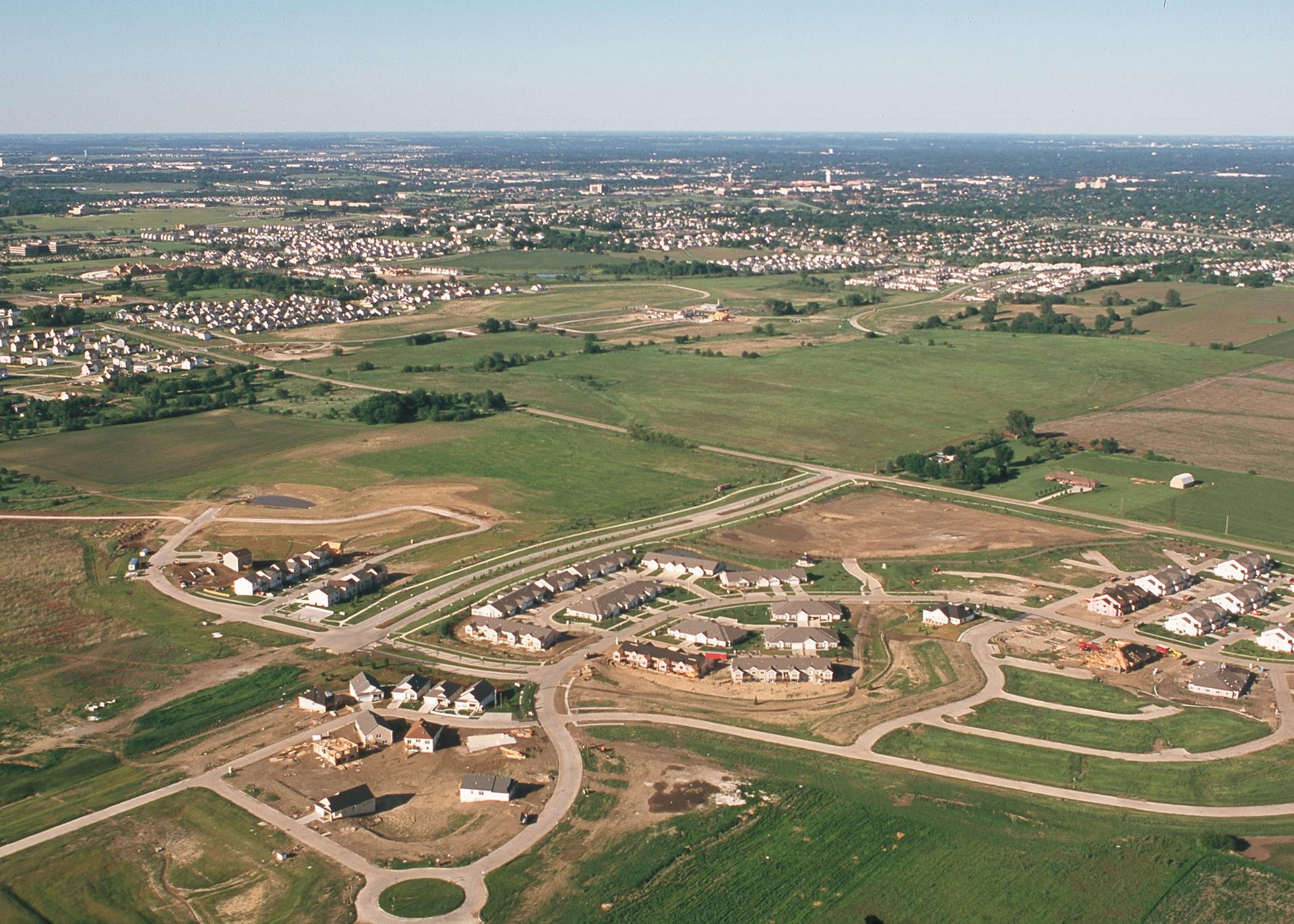US lost 11 million acres of farmland to development in past 2 decades
The United States has lost more than 11 million of acres of farmland to development over the last 20 years, according to a new report.
A series of studies by the American Farmland Trust shows that agricultural land is increasingly being converted, fragmented, or paved over — threatening the integrity of local and regional food systems. Of special concern, the report notes, are the loss of farmland to low-density residential development at the edge of urban and suburban areas.
The Farms Under Threat project studied the quality of land both for local food suppliers and the larger agriculture system, explains Julia Freedgood, a senior adviser with American Farmland Trust and a co-author the report. It identified the highest quality land in each state and then “tracked what happened to the land in terms of development patterns.”
“We had become aware that there was this insidious pattern of fragmentation in rural communities and nobody was measuring it or tracking it.”
“We had become aware that there was this insidious pattern of fragmentation in rural communities and nobody was measuring it or tracking it,” she explains. “So, we came up with a methodology that [would enable use to] see the impact of lower density kinds of development happening across the countryside.”
It’s a kind of sprawl, she says, but less concentrated than the suburban sprawl we’re accustomed to seeing.
“What you’ll see is one house per maybe five or 10 acres in an area, and maybe they’re having some horses or some llamas or something like that,” Freedgood explains. “It looks kind of like a farm if you’re in outer space and looking down for spatial mapping, but in terms of a farm economy, you suddenly have a different kind of an enterprise happening. It’s not a commercial enterprise.”
Related: Can this radical approach to dairies save US farms?
Ultimately, the infrastructure that supports local agriculture, things like feed and supply stores, for example, starts to move out and gets replaced by “people [who] have a couple of horses in their backyard,” Freedgood says. “So, it’s not exactly sprawl as we think of it, as urban sprawl with malls and everything around the city, but it still can have a detrimental impact on the agricultural community and economy.”
Often, these metro-adjacent farms do direct-to-consumer marketing or supply local farmers’ markets and other community-supported agriculture, Freedgood says. But as the suburban economy grows up around them, land values often rise beyond what a local farmer can afford to pay and pressure grows to develop for something other than a farm.
Related: Women farmers take center stage in US agriculture
Freedgood says the COVID-19 pandemic has highlighted the importance of local and regional agricultural systems.
“The pandemic has really showed the fault lines and how overly consolidated [our agricultural system] has become,” Freedgood says. “It’s not that we have a supply problem right now. What we have is a distribution problem, a supply chain problem. So, you see this awful juxtaposition of farmers having to euthanize their animals or dumping milk or leaving crops unpicked while at the same time we have these really long lines for food banks … and food security has become a really serious issue.”
Freedgood hopes that people start to take seriously some of the things she and others have been warning about for decades: the consolidation in the agricultural industry — and in cropland, in particular — and the importance of farmers, ranchers and farmworkers to the food system and the overall economy in the US.
“I think we need to really look at what we are going to do to make sure that we’re protecting farmland in our states and in our communities,” she insists. “I think we need to start looking at how we incentivize that kind of production so that we have this kind of resiliency so that we’re ready for everything that comes, whether it’s a pandemic or whether it’s climate change.”
This article is based on an interview by Steve Curwood that aired on Living on Earth from PRX.
